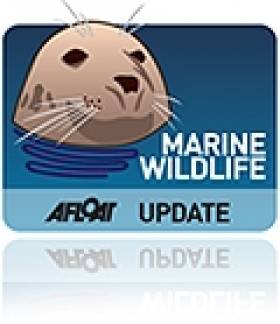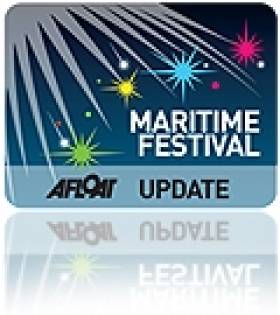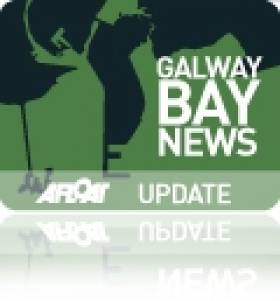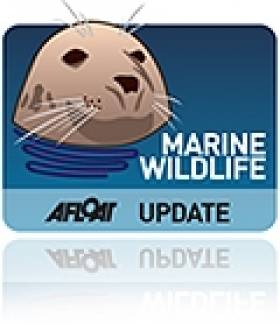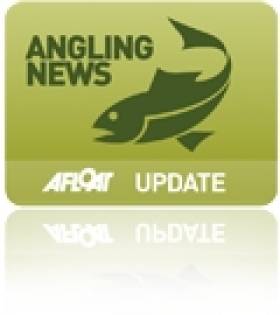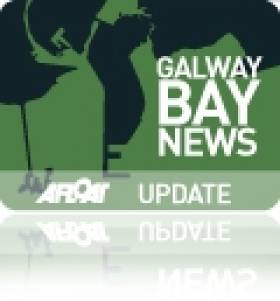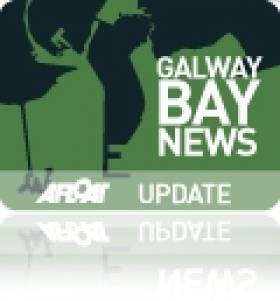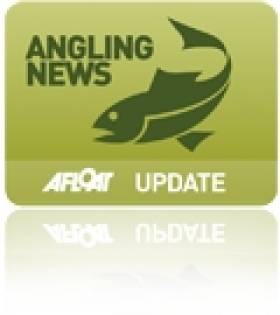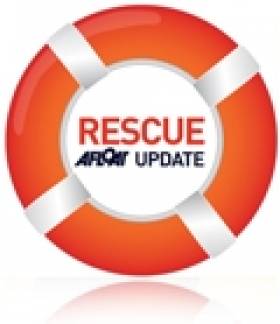Displaying items by tag: Salthill
'Beach Safari' At Salthill Ahead Of Galway Sea Festival
#MarineWildlife - Young and old alike are invited to join a 'beach safari' from the lifeguard hut Grattan Beach in Salthill at 11.30am on Sunday 26 May, ahead of the first Galway Sea Festival.
Marine wildlife experts such as Amy Lusher of GMIT's Marine and Freshwater Research Centre and Dr Nóirín Burke of the Galway Atlantaquaria will be on hand to provide insights into an often ignored world of plants and animals, as the Galway Independent reports.
“The shore can sometimes appear to be devoid of wildlife, but when you start to look closely, there is a wonderful amount of activity going on - in the sand, under the rocks and in the rock pools," said Dr Burke.
“Grattan Beach is such an amazing resource to have on our doorstep here in Galway. Just a few hundred metres from the footpath where people walk and jog you can enter a habitat where life is completely different from our own."
A further chance to discover more about this secret world of the marine habitat will be available at the Galway Atlantaquaria's 'Family Funday' on 2 June in conjunction with the city's Galway Sea Festival celebrations.
As previously reported on Afloat.ie, "tens of thousands" of visitors are expected to flock to the City of the Tribes for the first Galway Sea Festival from 31 May till 3 June over the June bank holiday weekend.
An Tostál Fest Rescheduled For End of May
#AnTostal - Galway's An Tostál maritime festival will take place on 26 May after strong winds forced the postponement of the originally scheduled date last Sunday, according to the Galway Independent.
Cian O’Lorcáin of the organisers said the decision to delay the event was made "for the benefit of water safety. We were really thinking of the crews on the water because, with the winds, it could have proved hazardous...
"Safety is the number one thing for us so when that couldn't be guaranteed, we decided to postpone."
As previously reported on Afloat.ie, the festival - reactivated in 2011 after a 50-year gap - celebrates Galway's maritime traditions with currach racing along the Salthill promenade. This year's event is also set to feature a Galway Hooker parade of sail.
Country Home On The River Slaney At A Bargain Price
#Property - A mid-Georgian country house on 50 acres in Co Carlow with its own angler's chalet on the River Slaney is attracting much attention from overseas for its knock-down price.
The Irish Times is singing the praises of Ballynoe House, a two-storey home with seven bedrooms and various additional outbuildings set in "beautiful parkland with good pasturage" - perfect for its owners Willem and Anneke Savelkouls who bred horses and kept sheep on the land.
The house itself comprises 850 sqm of floor space, the ground floor featuring a sizeable reception hall plus two high-ceilinged reception rooms with large windows, an open plan kitchen/living area and a study.
Upstairs can be found a master suite, five family bedrooms sharing two bathrooms and a guest suite with shower. Another bedroom is located in the basement, which features a games room, wine cellar, office space and a housekeeper's apartment.
Outside, the walled garden at the rear includes a swimming pool and pavilion added by noted architect Sam Stephenson when he was a resident in the 1970s, as well as a disused tennis court that a resurfacing would bring bang up to shape.
One big selling point is the property's prime waterfront location along a 2km stretch of the River Slaney, providing for some top-class salmon and trout angling.
Previously on the market for almost €4 million, Ballynoe House today is a snap for all you'll get at an asking price of just €1.24 million.
Viewing is by appointment only with agents Sherry FitzGerald. The Irish Times has more on the property HERE.
On the slightly more modest end of the scale, Collerans Auctioneers in Galway are handing the sale of 114 Ocean Wave in Salthill, a four-bed detached home close to the famous promenade for €460,000.
According to the Galway Advertiser, the house offers "beautiful views" of Galway Bay from the master bedroom on the first floor (completed by three en-suites).
On the ground floor, generous living and office space plus separate entrances lend the property to use as a GP practice or similar.
Galway Ironman Triathlon Cancelled Due To Funding Issues
#GalwayBay - Funding issues have resulted in the cancellation of what would have been the third annual Ironman 70.3 triathlon in Galway later this year, as the Galway City Tribune reports.
Organisers have expressed their sorrow at having to call a halt to the event, which already had some 1,600 people registered to take part, due to what they claim is a lack of funding from Fáilte Ireland.
“I think it’s ironic that we have to turn people away when ‘The Gathering’ is on,” said co-organiser Eoin McCormack.
The most recent Galway Ironman 70.3, staged in August 2012, overcame local swimming ban concerns to see more than 2,000 athletes swim 1.9km along the Salthill Promenade before a 90km cycle through Connemara and a 21.1km run through the streets of Salthill and The Claddagh.
It's estimated that the inaugural event in 2011 was worth more than €10 million to the local economy.
The Galway City Tribune has more on the story HERE.
Wildlife Beach Walk in Salthill
#MARINE WILDLIFE - The Irish Wildlife Trust teams with the Galway Atlantaquaria to host a wildlife walk on Grattan Beach in Salthill tomorrow Saturday 22 September.
Starting at 3.30pm at the lifeguard hut, the free walk will look at the plants and wildlife found in seashore habitats on Galway Bay and around the west coast of Ireland.
Families are especially welcome, and nets and buckets will be provided for adults and children alike to explore the rock pools.
Staff from the Atlantaquaria will be taking along a selection of sea life from their undersea bounty.
And it might also be worth taking the opportunity to get involved in Coastwatch's ongoing 'eco audit' of the Irish shoreline, as previously reported on Afloat.ie.
The Galway Independent has more on the story HERE.
Irish Fly Fair Returns for Third Year This November
#ANGLING - The Irish Fly Fair and International Angling Show returns to the Galway Bay Hotel in Salthill this November for the third year running.
As the Galway Independent reports, the show will run over the weekend of 10-11 November from 10am to 5pm daily featuring a wide range of exhibitors and trade stands.
Sixty of the world's greatest fly tyers will be on hand to give their advice in the new fly-dressers' workshop.
And angling personalities such as Hywel Morgan, Glenda Powell, Peter O'Reilly, Stevie Munn and Paddy McDonnell will return to give their helpful angling clinics and fly-casting demonstrations.
Meanwhile, younger anglers will have another chance to give the pros a run for their money in the second youth fly tying competition run by APGAI Ireland.
More details on the weekend will be forthcoming on www.irishflyfair.com.
Galway Beach Gets Clean Bill of Health for Ironman Triathlon
#GALWAY BAY - Galway City Council lifted the swimming ban on Salthill at the weekend, clearing the way for the upcoming Ironman 70.3 triathlon in the City of the Tribes.
As previously reported on Afloat.ie, concerns had been raised about the Galway beach closure last week resulting from elevated levels of E.coli above the EU's mandatory safety theshold.
But subsequent testing showed that levels had returned to below the safe limit, and Galway Bay FM reports that a second test confirmed that E.coli presence was "well below" permitted values.
Despite the bathing ban on Grattan Beach, triathlon organisers were confident that the event would "not be impacted".
According to the Galway Advertiser, some 2,500 particpants are registered to compete in the Ironman 70.3 triathlon this Sunday 2 September.
The second annual race comprises a 1.9km swim along the Salthill Promenade, a 90km cycle through Connemara and a 21.1km run through the streets of Salthill and The Claddagh.
As many as 25,000 visitors are expected in what marks another tourism boost for Galway, following on the heels of the Volvo Ocean Race finale last month.
No E.coli Risk for Galway Ironman Triathlon Say Organisers
#GALWAY BAY - Organisers of the Ironman 70.3 triathlon in Galway next weekend have given assurances that no competitors are at risk from E.coli contamination - despite concerns over elevated levels of the bacteria in Galway Bay.
The Evening Herald reports that E.coli levels in the waters off Salthill were recently found to have exceeded the EU mandatory safety threshold - similar to that which saw seven beaches closed in Cork last week, as well as Rush South in Dublin over the August bank holiday weekend.
Subsequent testing showed that levels had dropped below the safe limit, and Galway City Council was yesterday expecting a second set of results which, if positive, would see the beach at Salthill reopened to bathing.
The swim portion of the Ironman triathlon on Sunday 2 September will take a route along the Salthill Promeade from Blackrock to Palmer's Rock, and organisers say they are happy that the event "will not be impacted" by the current concerns.
"We are at the far end of the bay. The event is still eight... days away and this won't affect us in the least," said organiser Eoin McCormack.
A number of Irish celebrities will be taking part in the second annual Ironman 70.3 Galway event.
Rosanna Davison, Kathryn Thimas, Keith Duffy, Ray D'Arcy and Gráinne and Síle Seoige will be among those tacking the gruelling course that includes a 1.9km swim, a 90km bike ride and a run through the Salthill and Claddagh areas of Galway City.
The Evening Herald has more on the story HERE.
IADA Hosts 'Biosecurity Awareness' Evenings for Anglers
#ANGLING - The Irish Angling Development Alliance (IADA) is running a series of biosecurity awareness evenings at venues across Ireland over the next two months.
The evenings follow from the "success" of the IADA's awareness section at the recent Ireland Angling Show, and will provide an opportunity for more people to "meet with experts in the field and see what invasive species are first-hand".
Three events, in association with Inland Fisheries Ireland, are scheduled:
- 27 March at the Wetlands Centre, Ballybay, Co Monagahan (hosted by the Ballybay Angling Association)
- 18 April at the Cavan Crystal Hotel, Cavan (hosted by the Cavan Anglers Club)
- 23 May at the Salthill Hotel in Salthill, Galway (hosted by the Galway CAC)
All events run from 7:30pm till 9pm. Admission is free and all are welcome.
For more information contact Peter Walsh at [email protected]
Duo Rescued from Sinking Fishing Boat in Galway
#RESCUE - BreakingNews.ie reports that two men have been rescued from a sinking fishing boat in Galway Bay this afternoon.
One of the two men on board the vessel alerted rescue services around 2pm after they began taking on water close to Salthill west of the city.
Two other fishing boats aided the duo before the Galway RNLI lifeboat crew boarded the vessel and used a pump to keep it afloat.
The stricken boat has since been towed back to the city docks.


























